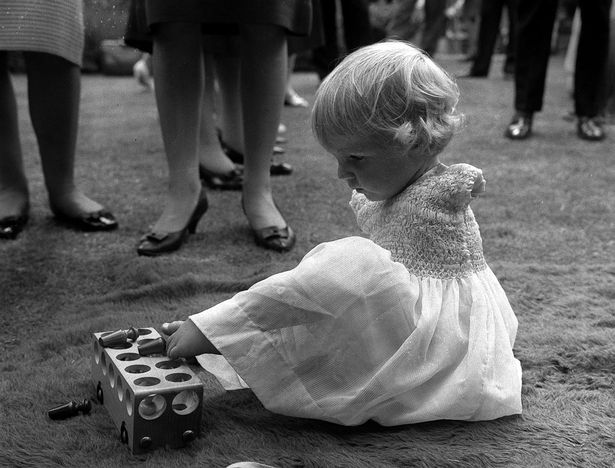TAVR: Innovation in Cardiology

The Transcatheter Aortic Valve Replacement (TAVR) technology launched in 2002 has continued to develop scientifically, with originality and innovation, and has completely changed the treatment of aortic stenosis in global cardiology.
In this minimally invasive surgery, a new valve is inserted without removing the old damaged valve. The new valve is inserted into the diseased valve. This procedure is called transcatheter aortic valve replacement (TAVR) or transcatheter aortic valve implantation (TAVI). It is similar to placing a stent in an artery, this method uses a catheter to deliver a replacement fully foldable valve to the valve site.
What is TAVR/TAVI Procedure?
Transcatheter aortic valve replacement (TAVR) or transcatheter aortic valve implantation (TAVI) is a non-surgical option. This method can save the lives of patients who do not want to undergo open-heart surgery or are in danger.
- So far, valve replacement surgery is mainly performed through open-heart surgery, in which a new tissue/mechanical valve prosthesis is inserted into the affected valve site.
- Open-heart surgery is an invasive procedure. It is well known that it requires a longer recovery period and can be challenging for the elderly (> 65 years).
- Transcatheter aortic valve replacement (TAVR) is a life-saving treatment for patients who do not want open heart surgery or are in danger.
- This minimally invasive surgery involves inserting a catheter into the femoral artery (the large artery in the groin) to place a new valve on the patient’s valve.
- Therefore, this procedure can be carried out through the small hole, so it is possible to recover from the procedure more quickly.

Transcatheter Aortic Valve Replacement. (n.d.). [Image]. CT Surgery Patients
What to do before TAVR surgery?
You will be treated by an experienced “cardiologist team”, including interventional cardiologists, cardiac surgeons, radiologists, anesthesiologists, intensive care doctors, nurses, etc.
- Exercise: Ask your doctor about the maximum physical activity you can do and the activities you should avoid for a few days after TAVR.
- Medications: Your cardiologist may recommend that you stop certain medications a week before surgery.
- Diet: Ask your doctor about any dietary recommendations you must follow. Your doctor may advise you not to eat or drink anything after midnight on the day before the operation.
- Dental Health: Since bacteria in the mouth can cause valve infections, you should see a dentist before TAVR to ensure your teeth are healthy.
- Rehabilitation plan: It is important to arrange transportation to and from the hospital in advance and provide home care after the operation.
Five steps of TAVR/TAVI:

Steps in TAVR. (n.d.). [Image]. JACC
- One week before: You may receive a call to confirm your appointment and briefly explain when to arrive at the hospital. You will be told to suspend or continue to use current medications and dietary restrictions.
- On the day of TAVR: You will be hospitalized the day before or the day before the operation.
- Preoperative care: An intravenous drip will be injected into your arm. You will go through multiple blood tests, ECG/ECG, and chest X-rays. Obtain consent and prepare access to the site with a disinfectant scrub.
- Day of the operation: You will be taken to the waiting area of the cardiac catheterization laboratory (catheterization laboratory), where you will be examined by a nurse and an anesthesiologist. Then, accompany you to the treatment room and connect you to the monitoring equipment. With permission, the entry site was treated with a disinfectant scrub. Sleeping pills (anesthetics) are given by intravenous injection.
- TAVR Procedure the use of a Balloon-Expandable Valve (Transfemoral route): Imaging strategies could be used to assist the medical doctors at some point of the TAVR procedure. A small incision could be made for your groin in which your physician will insert a short, hole tube referred to as a sheath. Your new valve could be positioned on a Navigator transport machine and compressed at the balloon to make it small sufficient to in shape via the sheath. When the transport machine reaches the diseased valve, the balloon could be inflated to open the brand new valve in the diseased valve. The balloon will then be deflated and eliminated. Immediately after this, the brand new valve will begin working. The sheath could be eliminated and the incision for your leg could be closed.
What happens after the process?
Post-operative Intensive Care Unit (ICU): You will be transferred to the intensive care unit after surgery. It will stay here for 24-48 hours or until it stabilizes. Here, you will be closely monitored and undergo a detailed physical examination, including multiple blood tests, chest X-rays, electrocardiograms, and echocardiograms (24 hours after surgery) to ensure that your recovery is reasonable once the disease has stabilized. You will be transferred to the ward, where you will stay for another 12 days.
What are the advantages of TAVR surgery?
After this operation, you will have a more energetic and active daily life, regain the ability to take care of yourself, you will be able to breathe normally, and reduce anxiety.

Benefits of TAVR surgery. (n.d.). [Image]. Myval
Sources:
- Raghu. (2021, January 23). Transcatheter Aortic Valve Replacement. Dr. C RAGHU Cardiologist. https://drraghu.com/resources/for-patients/diseases-conditions/transcatheter-aortic-valve-replacement/
- TAVR Patient Testimonial -Mr. V.K Anand’s TAVR success story. (n.d.). Merril’s MyvalTM– Transcatheter Aortic Valve Replacement System (TAVR). Retrieved July 10, 2021, from https://www.myval.com/about-tavr-therapy-procedure
- What is TAVR? (TAVI). (n.d.). Www.Heart.Org. Retrieved July 10, 2021, from https://www.heart.org/en/health-topics/heart-valve-problems-and-disease/understanding-your-heart-valve-treatment-options/what-is-tavr
- Transcatheter aortic valve replacement (TAVR) – Mayo Clinic. (2020, August 7). Mayo Clinic. https://www.mayoclinic.org/tests-procedures/transcatheter-aortic-valve-replacement/about/pac-20384698#:%7E:text=Transcatheter%20aortic%20valve%20replacement%20(TAVR)%20is%20a%20minimally%20invasive%20procedure,guide%20it%20to%20your%20heart.
- M. (n.d.). TAVR Heart Valve Replacement Procedure. Medtronic. Retrieved July 10, 2021, from https://www.medtronic.com/in-en/patients/treatments-therapies/transcatheter-aortic-valve-replacement/about/tavr-procedure.html







